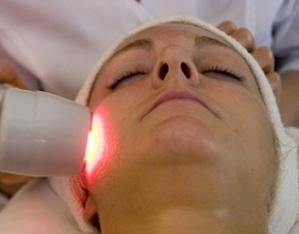Advent of Laser Technology in Scar Revision
Who doesn’t have a scar? The natural healing mechanism following injury or surgery most often leaves some level of scar. Many individuals bear no adverse reaction to scarring. Of course the location of a scar and its severity can make all the difference to some people’s self image. While the scar appearance is usually quite acceptable, in many other instances the scar can raise, thicken, or become red. This type of scarring is called ‘hypertrophic scarring.’ Some individuals may even develop an extreme form of scarring called a ‘keloid.’
Laser Scar Revision
 In recent years the use of lasers in medicine has enjoyed rapid development in medicine. Doctors and researchers are experimenting with the devices in a wide variety of procedures, like opening blocked coronary arteries and reshaping the cornea of the eye to correct poor vision, dissolving kidney stones and in scar revisioning.
In recent years the use of lasers in medicine has enjoyed rapid development in medicine. Doctors and researchers are experimenting with the devices in a wide variety of procedures, like opening blocked coronary arteries and reshaping the cornea of the eye to correct poor vision, dissolving kidney stones and in scar revisioning.
These advances in medical laser technology allows for easier revisioning treatment of scars. Applied in the right cases laser scar revisioning can have remarkable success and can bemore effective than ever.
Lasers are used in two primary ways in scar revisioning:
• to treat the surface color of the scar
• to go deeper and break up the collagen bunches that cause the scar
The result renders scars smoother, more evenly colored. The application of these new laser treatments appears limitless as doctors and researchers fine tune the levels of laser frequency for different medical applications. Lasers are effective on scars from accidents, dog bites, cesarean sections, orthopedic surgery, plastic surgery and skin grafts have proven quite successful and a large cross section of patients. It is important to note however because scarring is a highly individualized healing process that thorough medical consult is the best option. New laser therapies have ever proven effective on burn scars.
Laser Scar Revision Results
Scars cannot be completely removed from any treatment. Scar revision is meant to obscure the scar by making it blend better with your skin in colour and texture.; the more T the scar to blend s naturally with the surrounding skin The better the results. If the scar is uneven in texture, laser scar revision will help smooth out the scar so that the area is flatter. Additional treatments will continue to improve these effects.

